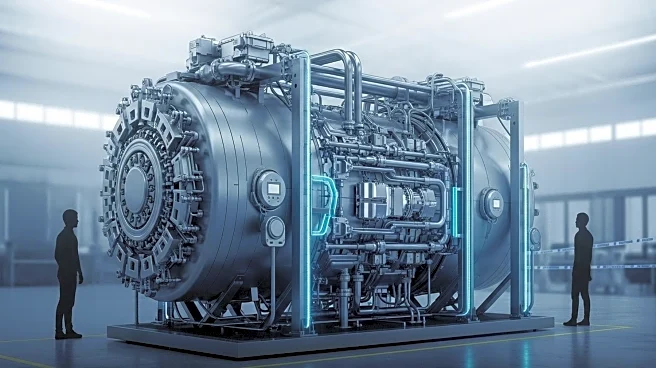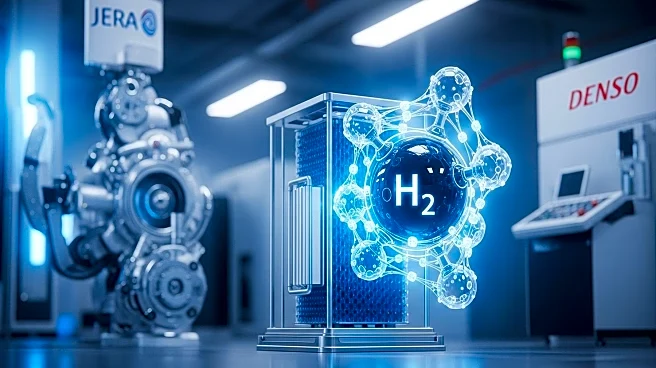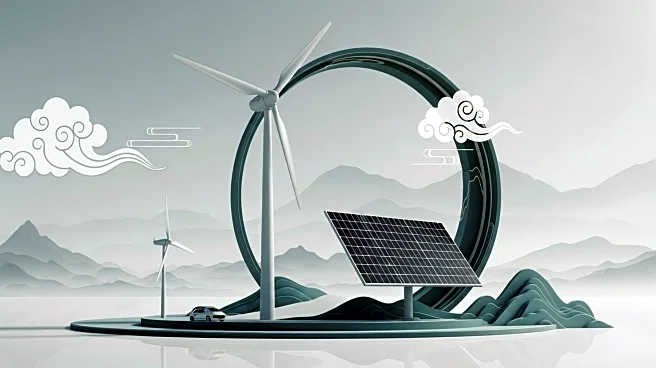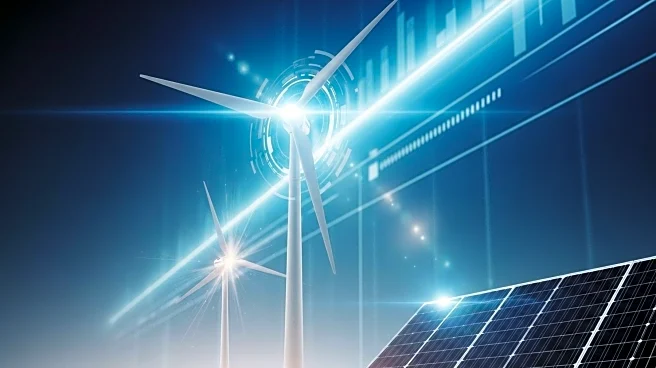What's Happening?
The International Energy Agency (IEA) has reported a significant rise in the development of mega-scale electrolyzers, with China leading the charge through a massive 500-MW project. This development is part of China's broader strategy to meet its high energy demands and transition towards hydrogen as a dominant fuel source. The IEA's Global Hydrogen Review highlights China's position as a global leader, accounting for 65% of global installed or FID-stage electrolyzer capacity. Despite manufacturing electrolyzers at a lower cost, China faces challenges such as shipping fees and integration costs. The report also notes the potential for early shipping fuel opportunities and the hydrogen potential in Southeast Asia.
Why It's Important?
China's advancements in electrolyzer technology are pivotal in the global shift towards renewable energy, particularly hydrogen. As the world moves towards decarbonization, China's leadership in this sector could influence global energy policies and market dynamics. The development of the world's largest green hydrogen and ammonia plant in Chifeng, powered entirely by renewable energy, exemplifies this shift. This project not only positions China as a leader in clean energy but also sets a precedent for other nations aiming to reduce reliance on fossil fuels. The global investment in hydrogen projects, exceeding $110 billion, underscores the sector's growing importance.
What's Next?
China's continued investment in electrolyzer technology and green hydrogen projects is likely to accelerate the global transition to renewable energy. As China exports its technology and expertise, other countries may follow suit, adopting similar strategies to meet their energy needs. The collaboration with Japan, which plans to use a portion of the plant's output for fertilizers, chemicals, and shipping, indicates potential international partnerships. The success of these projects could prompt further investments and innovations in the hydrogen sector, contributing to the global goal of achieving net-zero carbon emissions.
Beyond the Headlines
The rise of mega-scale electrolyzers in China highlights the ethical and environmental dimensions of energy production. As the world grapples with climate change, the shift towards hydrogen represents a critical step in reducing carbon footprints. However, the economic implications, such as the impact on traditional energy sectors and potential job shifts, must be considered. The integration of AI technology in optimizing energy production also raises questions about the future of energy management and the role of technology in sustainable development.











